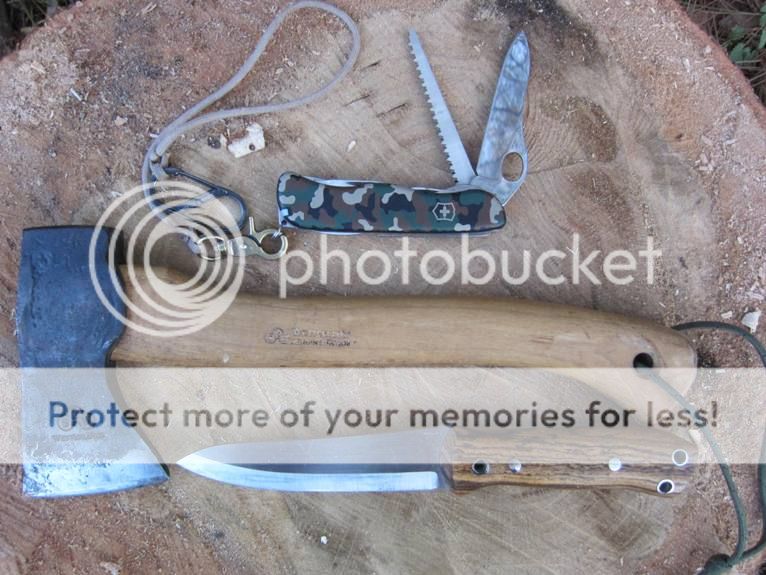Steve,
Is that overlook Tucks (as RBB suggests) or Great Gulf. Can't be Great Gulf, can it? That's gotta be Lion Head in the background.
Since we're sharing....
Did Whitney via the Mountaineers Route (class 3 at the end) with buds back in the 90s. That's been my highest point. No snow on it when we were there. But there was some puke on my boots when we were at the top. I blame my buddy's CytoMax.
I blame my buddy's CytoMax.
From this fall's solo trip to Ethan Pond.
 Ethan Pond by Pinnah, on Flickr
Ethan Pond by Pinnah, on Flickr
For grins, I took the Emberlit along with my Trangia and that really convinced me that (for me), the Emberlit is really much better suited for the lowland hardwoods, and not the higher boreal forest. The Silky Pocket Boy cut through spruce dead fall just fine and the Mora Companion HD was plenty up to splitting it down but a) I'd rather be walking than futzing with wood prep and b) by time you get to the boreal zone, it really makes more sense to localize impact by staying in established campsites (like in Steve's shot) and once you localize impact, even the stingy wood requirements of the Emberlit are (for my tastes) just too much.
Woke up to snow in the am and was much happier to lay in my bag and fire up the Trangia. Easier, faster, no fuss, no muss. It was fun to carry the Mora and the saw, I guess but they won't go again for the fun of it. Just much more fun to have less weight and cover more ground.
 Snowy morning at Ethan Pond by Pinnah, on Flickr
Snowy morning at Ethan Pond by Pinnah, on Flickr
Is that overlook Tucks (as RBB suggests) or Great Gulf. Can't be Great Gulf, can it? That's gotta be Lion Head in the background.
Since we're sharing....
Did Whitney via the Mountaineers Route (class 3 at the end) with buds back in the 90s. That's been my highest point. No snow on it when we were there. But there was some puke on my boots when we were at the top.
From this fall's solo trip to Ethan Pond.
 Ethan Pond by Pinnah, on Flickr
Ethan Pond by Pinnah, on FlickrFor grins, I took the Emberlit along with my Trangia and that really convinced me that (for me), the Emberlit is really much better suited for the lowland hardwoods, and not the higher boreal forest. The Silky Pocket Boy cut through spruce dead fall just fine and the Mora Companion HD was plenty up to splitting it down but a) I'd rather be walking than futzing with wood prep and b) by time you get to the boreal zone, it really makes more sense to localize impact by staying in established campsites (like in Steve's shot) and once you localize impact, even the stingy wood requirements of the Emberlit are (for my tastes) just too much.
Woke up to snow in the am and was much happier to lay in my bag and fire up the Trangia. Easier, faster, no fuss, no muss. It was fun to carry the Mora and the saw, I guess but they won't go again for the fun of it. Just much more fun to have less weight and cover more ground.
 Snowy morning at Ethan Pond by Pinnah, on Flickr
Snowy morning at Ethan Pond by Pinnah, on Flickr



